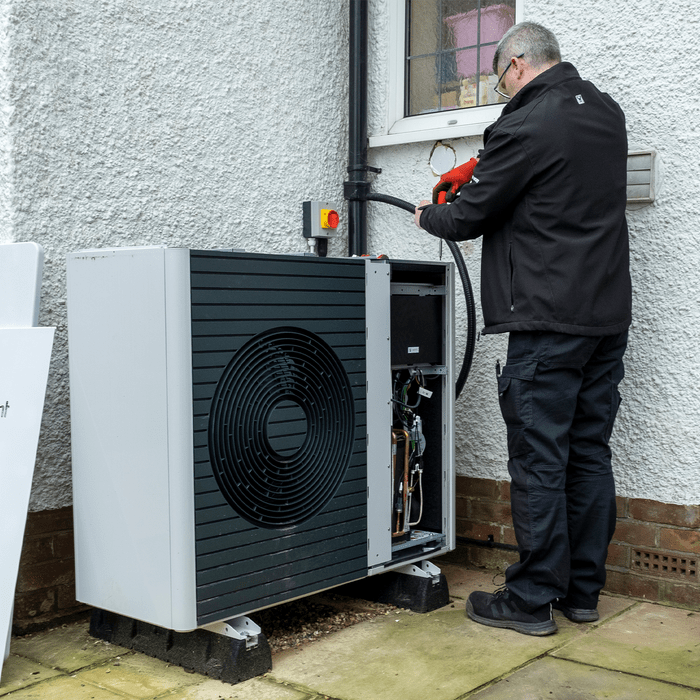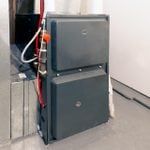3 Most Eco-Friendly Heating Systems for Your Home

Whether you're replacing your HVAC system or adding more heat in your spare room, here's how to make it ultra planet- and people-friendly.
As a renter I used to celebrate when I found a unit with a gas-burning forced-air furnace, because it meant a cheaper fuel bill than electric baseboards. Now as a homeowner, I own one, but no longer covet it.
In our race to cut our greenhouse gas emissions, it’s a dinosaur. Today’s more efficient technology means our future depends on going electric.
“The only eco-friendly heating system is an electric heat pump system,” says Panama Bartholomy, executive director of the Building Decarbonization Coalition. “The good news is, there are many types of them.
“If you have a ducted system, you can use a standard heat pump or a ducted mini-split. If you don’t have any ducts and are looking to replace something like a wall heater or baseboard heaters, you could use a ductless mini-split system. There are even companies that make heat pumps that go in your window.”
Electricity-driven heating is today’s gold standard. Before the HVAC systems we install today reach the end of their lifespans, it’s possible the grid will be heavily if not entirely powered by carbon-free energy sources.
Non-fuel burning devices also reduce health-damaging air pollution in our homes and usually deliver big on energy savings. They’re up to to five times more efficient than furnaces.
Here are some eco-friendly heating system options. And don’t forget the cost can be partly covered by tax credits and rebates included in the new Inflation Reduction Act (IRA) .
On This Page
Air-Source Heat Pumps
These are essentially air conditioners that run in reverse, with outside air providing heating and cooling to your home. They come in several configurations:
- Packaged, as in window and portable stand-alone units;
- Ductless and ducted mini-splits;
- Ducted central heat pumps.
Window units and mini-splits offer DIY installation and usually cost well under $1,000. Full HVAC systems can run between $3,000 and $18,000. Cost depends on whether you need electrical and ductwork upgrades; home size and required heating capacity; climate in your location; and what you’re replacing. These systems typically last around 14 years.
If you’re thinking about going with an air-sourced heat pump, also keep in mind:
- The best systems offer a heating seasonal performance factor (HSPF) of 10.5, a seasonal energy efficiency rating (SEER) of 20 or higher and a coefficient of performance (COP) of 3 or better.
- If you live where it’s cold in the winter, make sure the installer installing is familiar with the NEEP cold-climate air source heat pump list. Ask for one that works well down to minus-5 degrees or lower.
- If you’re in the market for an air conditioner, don’t buy a standalone. “Instead, buy a heat pump version that can provide cooling and heat,” says Sara Baldwin, director of electrification policy at Energy Innovation. “It’s a far more efficient and cost-effective option and can facilitate the transition away from fossil fuels more quickly.”
- To bring down costs, the IRA provides a $2,000 tax credit for heat pumps and additional incentives for electrical upgrades. Low-to-moderate income households can also benefit from new rebates, administered through state energy offices.
Ground-Source (Geothermal) Heat Pumps
These systems rely on the relatively constant temperature of the earth as an exchange medium. They’re highly efficient for heating and cooling, offering a 25 to 50 percent cost savings over conventional fossil fuel systems. But they require land to accommodate the pipes, which must be buried.
Ground-source heat pumps range from $3,000 to $30,000, depending on the climate, soil conditions, available land, local installation costs, the size of your home and heating and cooling needs. They’re also durable. Inside components last around 24 years, and the ground loop more than 50.
The IRA provides a 30 percent credit for geothermal heat pump projects, with potentially more incentives available from state energy offices.
Radiant Heating Systems
In-floor radiant heating systems aren’t as efficient as heat pump, and can’t double as a cooling system. But they can still provide energy savings with all the added benefits of ditching fossil fuels, provided you heat your water with electricity and and not gas.
“Radiant floors may make sense for home additions that don’t easily or affordably allow for extending the heating system into the new space, or when redoing your floors,” says Baldwin. “By avoiding forced air circulation and the use of ducts, they can also help eliminate allergens and dust.”
If you’re leaning toward a radiant floor system, know there are different electric heating cables or hydronic (liquid) systems, depending on what type of floor you have. Flooring materials with more thermal mass can help retain heat longer, thus saving energy.
Radiant floor heating costs range from $8 to $20 per square foot. It pairs well with distributed solar and energy storage, also covered under IRA incentives.
Other Eco-Heating Advice
If you’re hiring a contractor, get two or three bids. Make sure they know how to properly size a heat pump based on a manual J load calculation, which accounts for factors like your home’s size, climate zone, quality of insulation and windows.
Investments in air sealing and insulation, programmable thermostats and proper equipment maintenance can also reduce the size of the unit you need and make your home more comfortable.
“There is no such thing as an eco-friendly home that has lots of air holes or doesn’t have insulation,” says Bartholomy. “Weatherization is an imperative part of having an eco-friendly home.”



